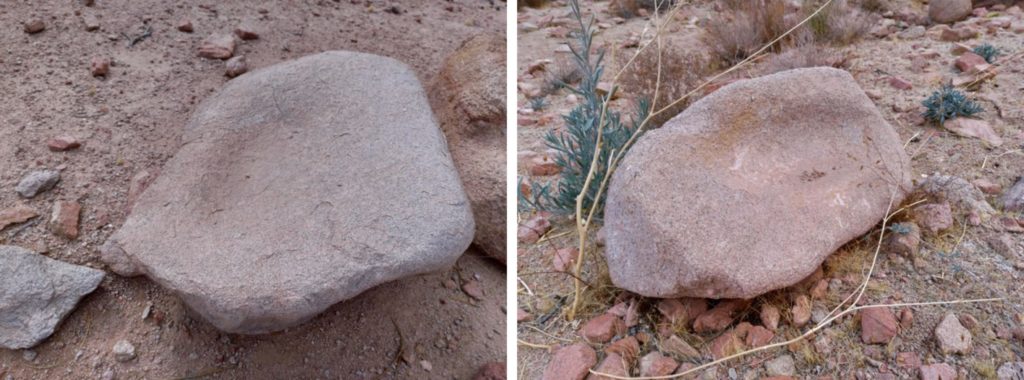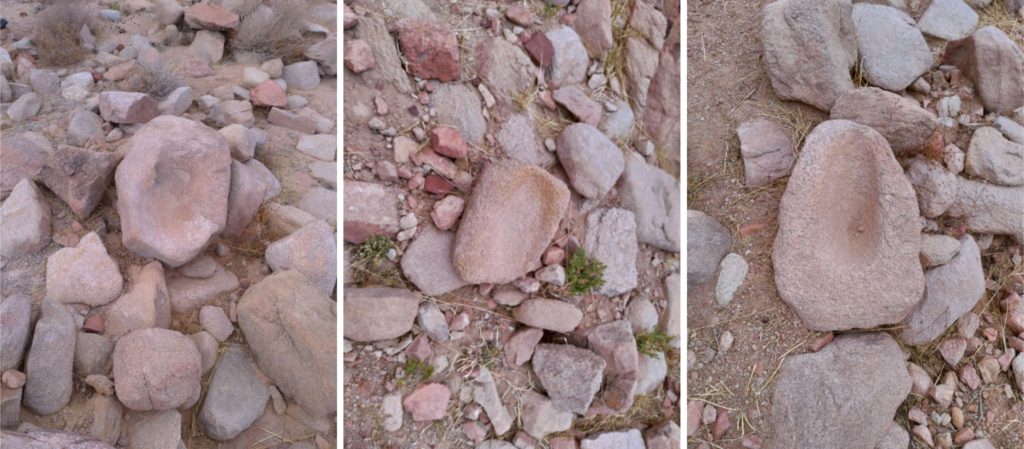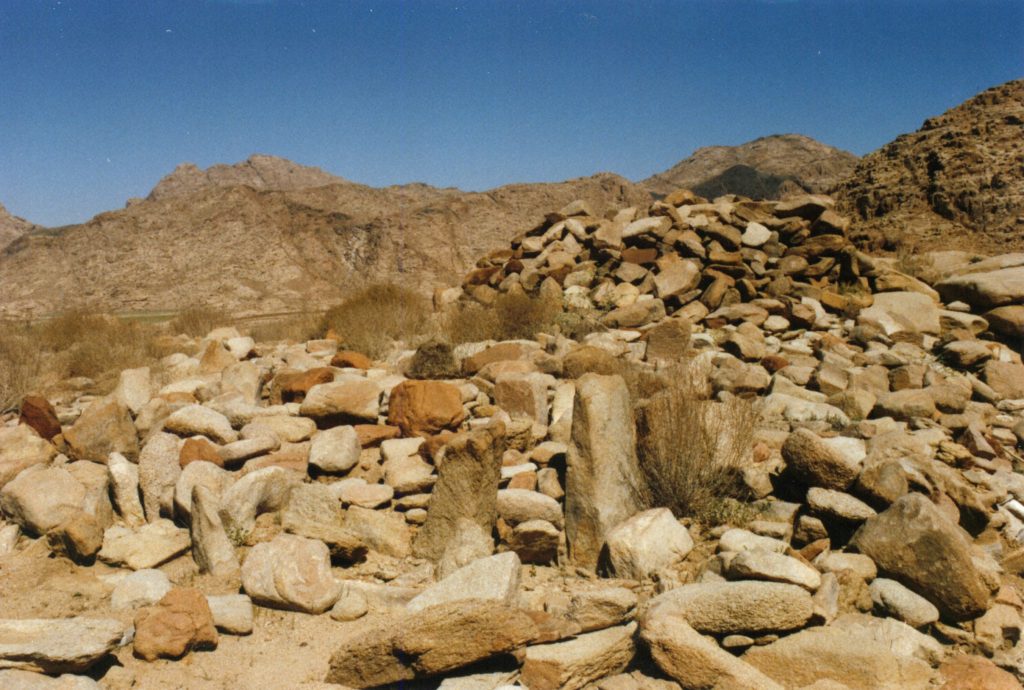In northwest Saudi Arabia, a large fenced archaeological site lies 4 miles north of the base of Jabal al-Maqla, a location surmised for the biblical Mount Sinai of the Exodus. This 28 acre site, first described and photographed in the 1990s by travelers Jim and Penny Caldwell, appears to be a Bronze Age cemetery that may be related to ca. 1445 BC Mount Sinai events. My recent book, The Exodus Mysteries: of Midian, Sinai & Jabal al-Lawz (pages 205-212), discusses this site in detail.
Exodus 32:28 recalls that 3000 Hebrews were slain at Mount Sinai by the Levites after their idolatrous worship of a golden calf. The dead would have been considered unclean, and buried well outside of the Hebrew encampment adjacent to Jabal al-Maqla. A map of the cemetery site is shown in Figure 1. Figure 2 pictures manmade “standing stones” and tumuli (stone heaps) that are likely associated with graves.

Figure 3 shows two graves that were carved into the rock hillside west of the main cemetery area. The slabs that once sealed the tombs are still present. This location is indicated by the circled red X in Figure 1.

Figures 4 and 5 show a number of grinding stones that were found in this cemetery. These items could indicate past habitation. Alternatively, they could have been left to commemorate the graves of women. This practice has been noted elsewhere in ancient burials.


To my knowledge, this archaeological site has not been investigated. If these were Exodus burials, the disgraced dead were likely buried without grave goods, which would make cultural identification and dating difficult. Also, the Hebrews likely did not utilize pottery in the Exodus due to its weight and fragility, which eliminates it as a potential clue for archaeologists. Thus, any future excavation must include carbon 14 dating of entombed bone and organic materials in order to develop a chronological framework.

